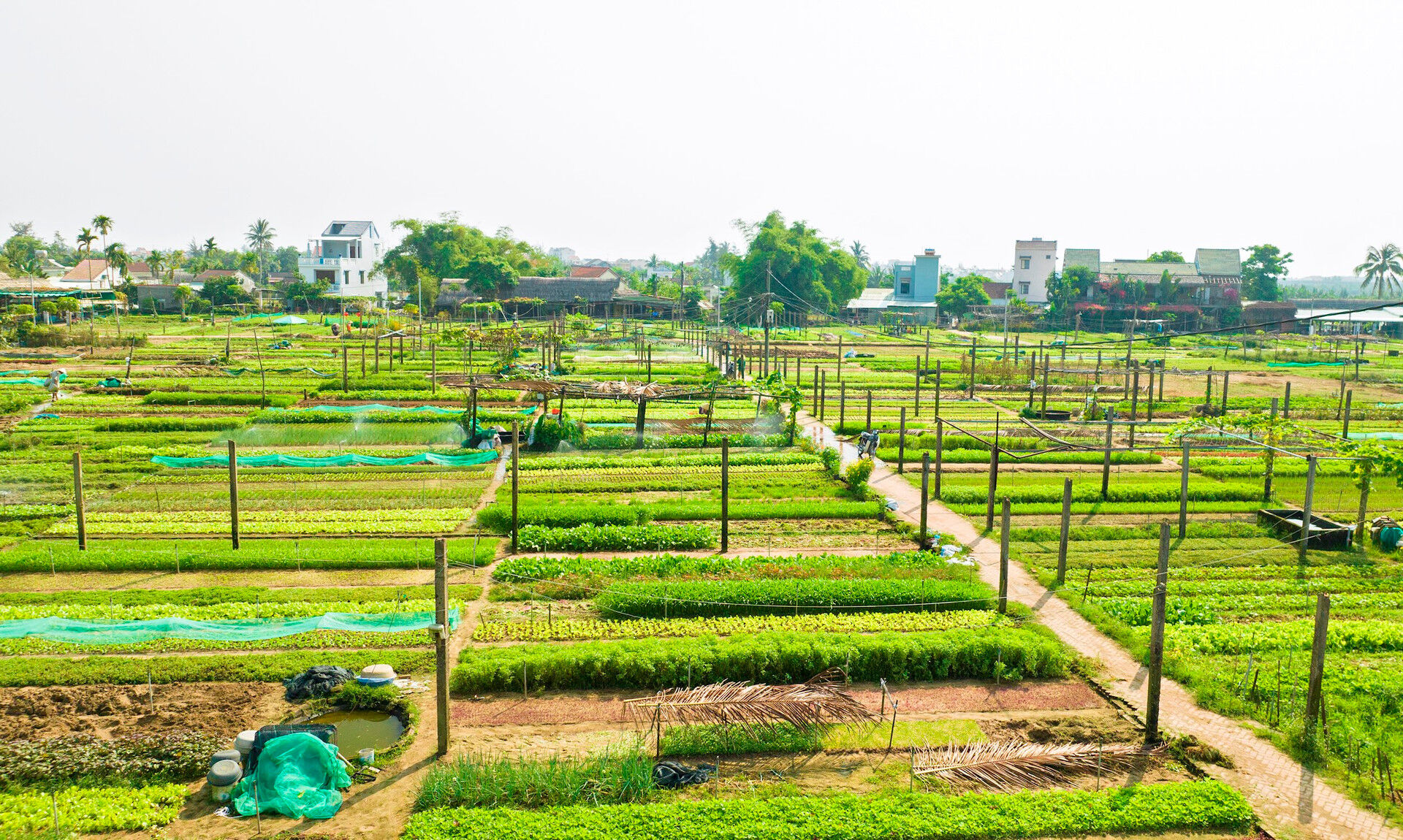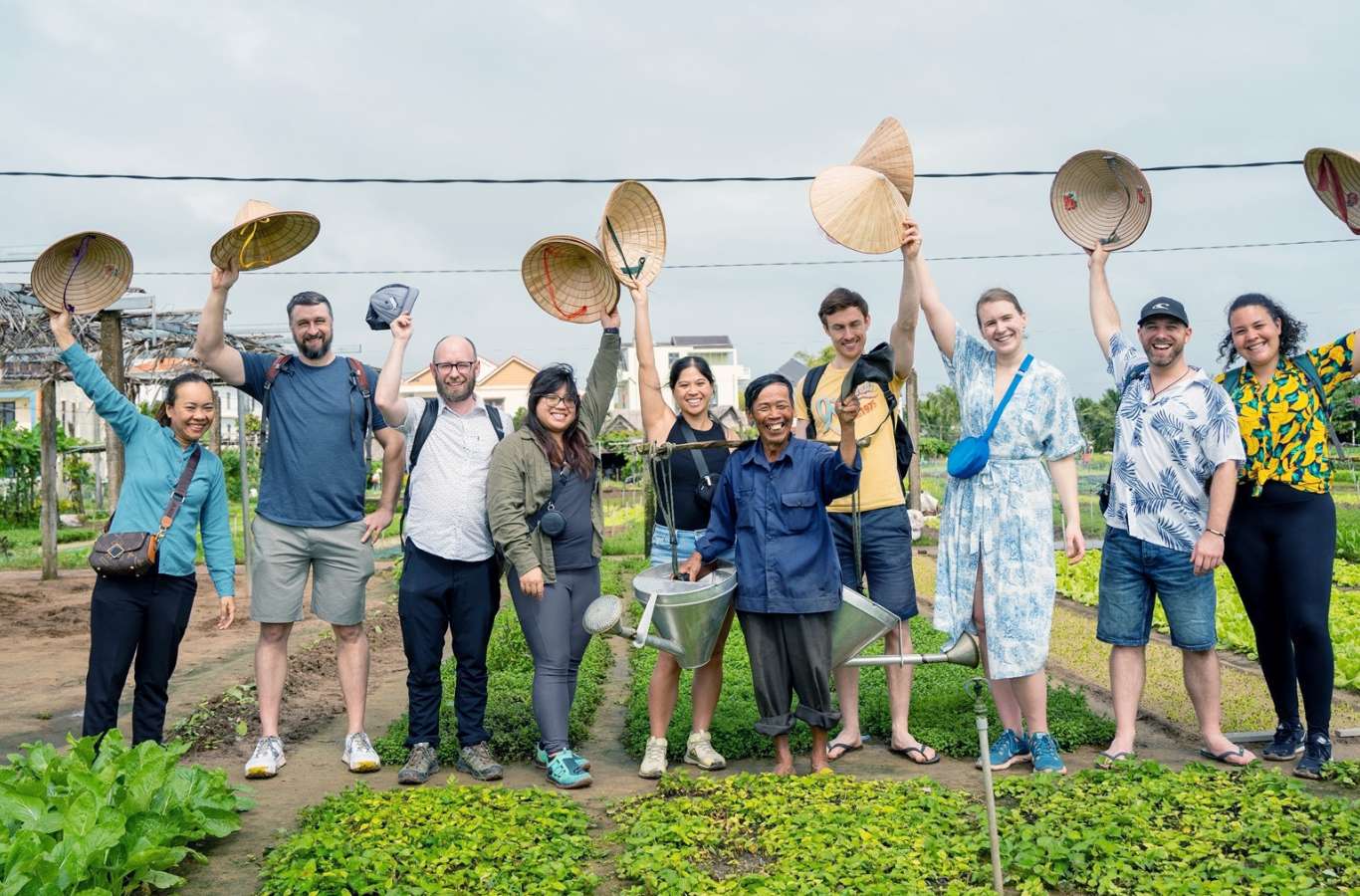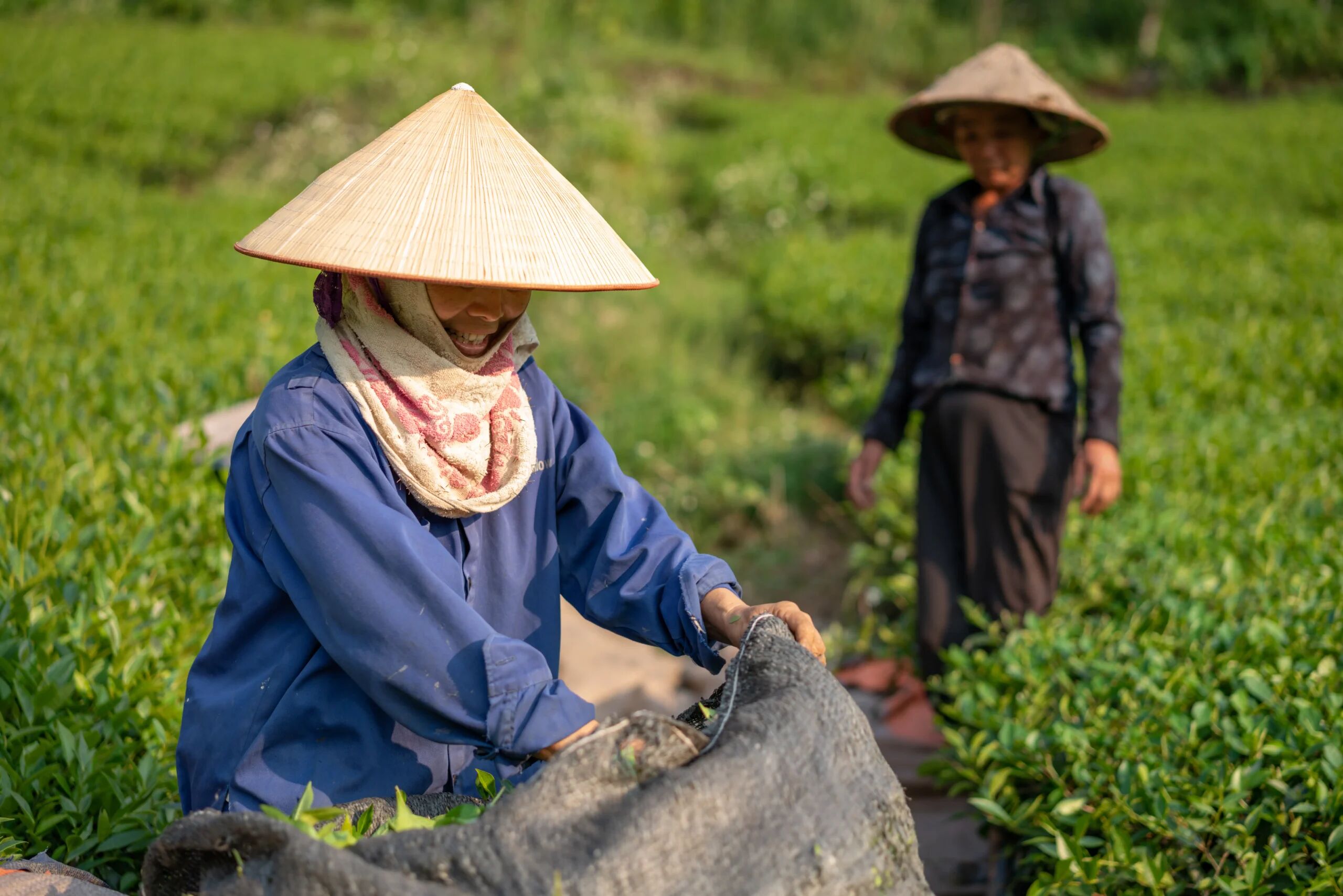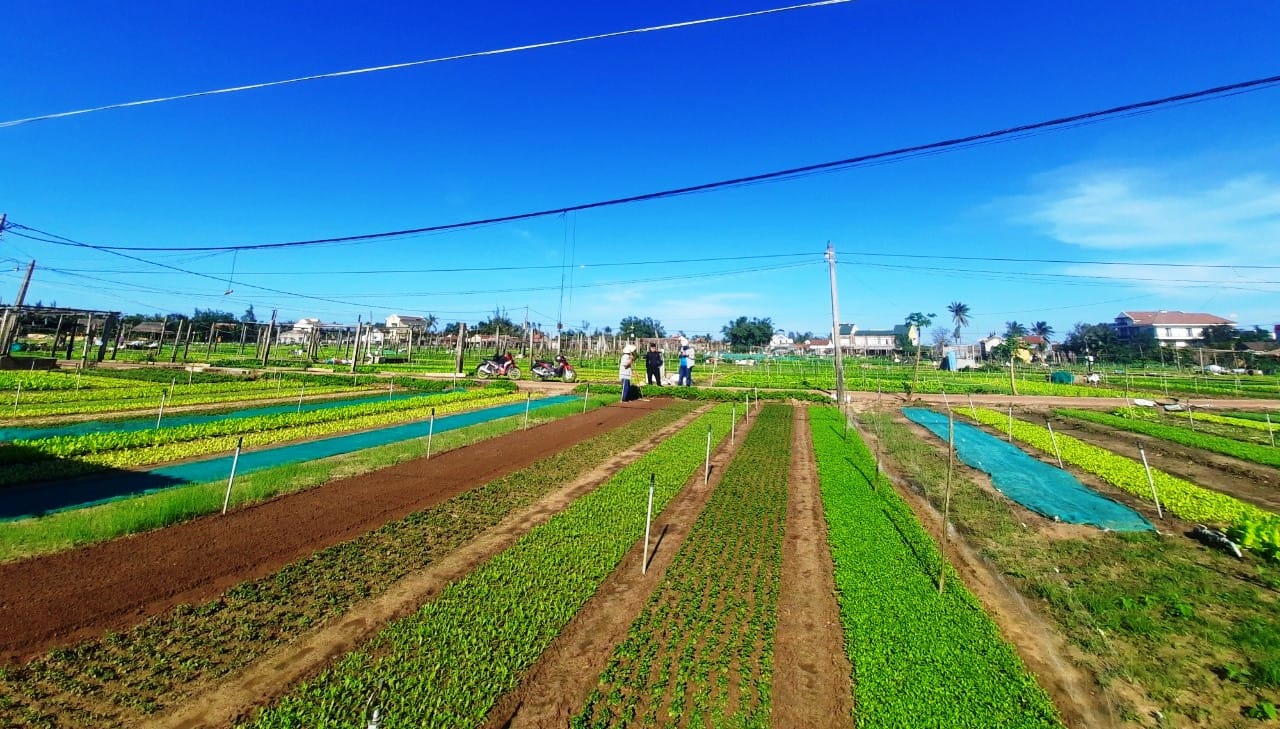Immerse yourself in the vibrant culture of Tra Que, Vietnam with our 2025 guide! Learn about farming traditions, Buddhist heritage, eco-friendly Tra Que Tours, and top providers for a sustainable adventure with Tra Que Travel. Plan your journey today!
Author Bio: Written by Tony Bùi, with over 20 years of experience in the travel industry, personally guiding and organizing tours for over 100,000 travellers across Southeast Asia. This guide draws from firsthand insights, guest feedback from Legend Travel Group surveys, and official sources like culturetrip.com, holiday-weather.com, weareglobaltravellers.com, localvietnam.com, and bestpricetravel.com. Information based on latest data as of August 27, 2025; verify before travel. Reflects Vietnam’s updated travel regulations.
Tra Que, a charming farming village in Quảng Nam Province, central Vietnam, located at approximately 15.90°N, 108.33°E and 5 meters elevation, is renowned for its organic herb gardens, traditional farming practices, and proximity to Hội An Ancient Town bestpricetravel.com. A cultural gem for travelers seeking authentic rural experiences, Tra Que attracts visitors for its farm tours, cooking classes, and cultural sites like local temples culturetrip.com. Exploring Tra Que’s culture with guided Tra Que Tours immerses you in its Mahayana Buddhist traditions, agricultural heritage, and vibrant festivals like Tết weareglobaltravellers.com. A fusion of spirituality, rural life, and community bonds, Tra Que, facilitated by trusted Tra Que Travel providers, is ideal for culture enthusiasts, food lovers, and eco-conscious travelers. Mastering Exploring Tra Que Culture etiquette ensures a respectful journey, enhancing this vibrant adventure.
Following Vietnam’s updated travel regulations in 2025, Tra Que is accessible via road or bus from Hội An (15–20 minutes) or Đà Nẵng (30–45 minutes), with local transport like bicycles or scooters within the village. This guide blends cultural insights, practical visiting tips, and sustainable Tra Que Travel ideas for a memorable experience.
Exploring Tra Que’s culture requires a visa for most nationalities ($25–$50); ASEAN countries enjoy visa-free entry for 14–30 days. Farm tours or cooking classes cost $10–$25 (240,000–600,000 VND); temple entry is free with donations ($0.20–$1 or 5,000–25,000 VND) appreciated. Guided tours cost $15–$80 (360,000–1,920,000 VND), and local purchases range from $0.20–$10 (5,000–240,000 VND). Key sites are accessible by bicycle, scooter, or walking from Tra Que village. Verify schedules and visa requirements via vietnamtourism.gov.vn.
 Photograph the festive spirit of Tra Que’s cultural vibrancy (Source: Internet)
Photograph the festive spirit of Tra Que’s cultural vibrancy (Source: Internet)Vietnamese Farming Traditions: Tra Que’s culture is rooted in organic farming, with its herb gardens supplying fresh produce to Hội An’s restaurants. Farmers use traditional methods like hand-tilling and natural fertilizers, fostering a deep connection to the land culturetrip.com.
Mahayana Buddhist Heritage: Local temples, such as Tra Que’s communal temples, are central to spiritual life, where locals practice prayer and merit-making rituals to strengthen community bonds weareglobaltravellers.com.
Festivals: Tết Festival (January–February) features temple rituals, family gatherings, and vibrant celebrations, while the Mid-Autumn Festival (September) showcases lantern displays and mooncakes, reflecting cultural vibrancy bestpricetravel.com.
Cuisine: Vietnamese dishes like cao lầu, bánh mì, and fresh herbs from Tra Que’s gardens are staples, served at local markets or during cooking classes, highlighting the region’s culinary heritage holiday-weather.com.
Community Life: The village’s farming cooperatives and communal markets foster strong social ties, with farm tours and cooking classes showcasing daily life and cultural identity localvietnam.com.
Tra Que Herb Gardens: A cultural hub for organic farming, offering farm tours and cooking classes that showcase traditional agricultural practices (entry: $10–$25 or 240,000–600,000 VND, open 7:00 AM–5:00 PM) holiday-weather.com.
Tra Que Communal Temple: A local temple central to Buddhist rituals and festivals like Tết (entry: free, donations $0.20–$1 or 5,000–25,000 VND, open 7:00 AM–5:00 PM) weareglobaltravellers.com.
Tra Que Market: A vibrant hub for local herbs, crafts, and cultural exchanges, reflecting the village’s agricultural heritage (entry: free, open 6:00 AM–6:00 PM) localvietnam.com.
Hội An Ancient Town (Nearby): A UNESCO World Heritage Site, 3 km from Tra Que, showcasing historical and cultural ties to the region’s trading past (entry: $5 or 120,000 VND, open 7:00 AM–9:00 PM) culturetrip.com.
Cultural etiquette ensures a respectful experience at cultural sites during Tra Que Tours. Here’s your guide, based on current norms as of August 27, 2025:
Greetings: Offer a “xin chào” (hello) with a slight nod; use both hands when paying for farm tours or purchases to show respect, especially at temples or markets.
Dress: Wear modest clothing covering shoulders and knees for temple visits or farm interactions; a lightweight scarf ($1 or 25,000 VND) aligns with local norms culturetrip.com.
Behaviour: Maintain a quiet demeanor on farm tours and in temples; ask permission before photographing locals or farmers, especially during rituals; avoid loud behavior in communal spaces like Tra Que’s herb gardens. Avoid touching farming tools or sacred items, as these are disrespectful in Vietnamese culture. A guest shared: “Respecting Vietnamese customs made our Tra Que cultural experience profound.”
Customs: Farm tours or cooking classes cost $10–$25 (240,000–600,000 VND, recommended tip $0.20–$1 or 5,000–25,000 VND); temple entry is free with donations ($0.20–$1 or 5,000–25,000 VND) appreciated; remove shoes in temples; avoid pointing feet at sacred objects; tipping is not mandatory but appreciated ($0.20–$1 or 5,000–25,000 VND); avoid public criticism of the government (penalties apply). Avoid littering to preserve fields and cultural sites culturetrip.com.
Tip: Say “cảm ơn” (thank you) to locals or guides; use eco-friendly practices like carrying reusable water bottles ($2 or 50,000 VND) to support sustainable Tra Que Travel; maintain respect in communal spaces. Tony Bùi notes: “In 20 years guiding, I’ve seen respectful travellers thrive in Tra Que’s vibrant culture.”
General Tips:
Language: Carry a phrase card ($1 or 25,000 VND) for Vietnamese basics like “cảm ơn”; English is limited in Tra Que, but common in tourist areas culturetrip.com.
Respect: Follow farm and temple rules (avoid touching farming tools or sacred items); avoid disrupting festivals; support local farmers with fair purchases in markets.
Navigation: Key sites like Tra Que Herb Gardens and Tra Que Communal Temple are accessible by bicycle, scooter, or walking from Tra Que village; use offline maps (Maps.me) with “Tra Que” or “Hội An” for navigation.
Eco-Tip: Use bicycles ($2–$5 or 50,000–120,000 VND/day) or scooters ($5–$10 or 120,000–240,000 VND/day) to reduce emissions, aligning with Vietnam’s green tourism goals.
Note: Etiquette reflects current norms; verify site hours via bestpricetravel.com.
 Start your cultural journey with Tra Que’s vibrant glow (Source: Internet)
Start your cultural journey with Tra Que’s vibrant glow (Source: Internet)Below is a curated list of tour options for exploring Tra Que’s culture, based on latest data from holiday-weather.com, culturetrip.com, weareglobaltravellers.com, and localvietnam.com. Confirm schedules and prices before booking.
Details: Explore Tra Que Herb Gardens, Tra Que Communal Temple, or Tra Que Market independently; suitable for cultural enthusiasts; low to moderate difficulty.
Schedule: Daily; farm tours or cooking classes operate 7:00 AM–5:00 PM ($10–$25 or 240,000–600,000 VND); temples open 7:00 AM–5:00 PM (free, donations $0.20–$1 or 5,000–25,000 VND); market open 6:00 AM–6:00 PM (free); vibrant during Tết Festival (January–February).
Cost: Farm tour or cooking class: $10–$25 (240,000–600,000 VND); temple entry: free (donations $0.20–$1 or 5,000–25,000 VND); transport (bicycle: $2–$5 or 50,000–120,000 VND/day); local purchases: $0.20–$10 (5,000–240,000 VND).
Location: Tra Que, Quảng Nam Province, Vietnam.
Eco-Friendly Note: Use bicycles or scooters to reduce emissions; avoid littering in herb gardens or rivers.
Tip: Check schedules at bestpricetravel.com; visit early (7:00 AM) for farms or temples; a guest noted: “Self-guided cultural visits were immersive and respectful.”
Details: 1-day group tour visiting Tra Que Herb Gardens and Tra Que Communal Temple; includes English-speaking guide, transport from Hội An or Đà Nẵng, lunch, and entry fees; low difficulty.
Schedule: Daily; departs 8:00 AM from Hội An or Đà Nẵng hotels; returns by 4:00 PM.
Cost: $25–$40/person (600,000–960,000 VND, includes entries).
Pick-up/Drop-off: Hotels in Hội An or Đà Nẵng.
Eco-Friendly Note: Group transport with fuel-efficient vehicles minimizes impact; supports local farmers.
Tip: Book via legendtravelgroup.com; a guest noted: “Legend’s tour brought Tra Que’s culture to life.”
Details: 1-day guided tour with a Tra Que farm tour and cycling through rice fields; includes English-speaking guide, transport from Hội An or Đà Nẵng, lunch, and entry fees; low to moderate difficulty.
Schedule: Daily; departs 7:30 AM from Hội An or Đà Nẵng hotels; returns by 4:00 PM.
Cost: $30–$50/person (720,000–1,200,000 VND, includes entries).
Pick-up/Drop-off: Hotels in Hội An or Đà Nẵng.
Eco-Friendly Note: Small groups reduce environmental impact; supports local communities.
Tip: Book via localvietnam.com; a guest noted: “The combo tour blended cultural and nature experiences perfectly.”
Details: 2–3 day tour combining Tra Que Herb Gardens, Tra Que Communal Temple, and Hội An Ancient Town; includes English-speaking guide, transport, accommodation, meals, and entry fees; low to moderate difficulty.
Schedule: Daily; departs from Hội An or Đà Nẵng hotels; returns after 2–3 days.
Cost: $80–$200/person (1,920,000–4,800,000 VND, includes entries).
Pick-up/Drop-off: Hotels or custom locations in Hội An or Đà Nẵng.
Eco-Friendly Note: Uses eco-lodges and fuel-efficient transport; supports local communities.
Tip: Book Tra Que Tours via legendtravelgroup.com or WhatsApp (+84 825862222); a guest noted: “The multi-day tour was a deep cultural immersion.”
Self-Guided Exploration: Flexible and authentic, ideal for independent travellers with cultural awareness.
Group Cultural Tours: Affordable and guided, perfect for immersive cultural insights.
Combo Cultural and Nature Tours: Blend farm tours with nature experiences for a comprehensive journey.
Multi-Day Cultural Tours: Offer in-depth exploration of Tra Que’s heritage, perfect for culture enthusiasts.
Eco-Friendly Note: Group and multi-day tours use fuel-efficient transport or bicycles, supporting Vietnam’s green tourism goals.
 Learn Tra Que’s traditions with expert guidance (Source: Internet)
Learn Tra Que’s traditions with expert guidance (Source: Internet)Key cultural exploration opportunities include:
Tết Festival (Vietnamese Lunar New Year): Typically January–February, vibrant with temple rituals and community celebrations; cool and dry (20–25°C); check dates at vietnamtourism.gov.vn.
Mid-Autumn Festival: Typically September, festive with lantern displays and mooncakes; warm and rainy (22–30°C); check dates at vietnamtourism.gov.vn.
Farm Tours and Cooking Classes: Daily, ideal year-round for cultural experiences; best in dry season (January–August) for comfortable weather; February–March for lush herb gardens weareglobaltravellers.com.
Dry season (January–August, 20–35°C) is ideal for farm tours, cooking classes, and festivals. Wet season (September–December, 22–30°C) suits indoor cultural experiences and budget travelers. Morning visits (7:00 AM–10:00 AM) avoid heat or crowds. Verify weather via accuweather.com.
Online Platforms: Book Tra Que Tours via localvietnam.com, legendtravelgroup.com, or bestpricetravel.com ($15–$80). Provide pick-up details (e.g., Hội An or Đà Nẵng hotels); e-tickets are acceptable, but printing is recommended.
Tour Operators: Contact agencies like Legend Travel Group for bundled tours with farm tours, temples, or markets.
Direct: Farm tours or cooking classes cost $10–$25 (240,000–600,000 VND); temple entry is free (donations $0.20–$1 or 5,000–25,000 VND); book guided tours via local agencies in Hội An (e.g., +84 912 379 189); confirm schedules via bestpricetravel.com.
Eco-Tip: Use digital tickets to reduce paper waste; opt for bicycles ($2–$5 or 50,000–120,000 VND/day) or scooters ($5–$10 or 120,000–240,000 VND/day) to minimize emissions.
Tip: Book early for festivals (January–February, September); arrive by 7:00 AM for farm tours or temples; carry small VND notes for donations or purchases; confirm visa requirements ($25–$50 if needed).
 Begin your cultural exploration with Tra Que’s tranquil ambiance (Source: Internet)
Begin your cultural exploration with Tra Que’s tranquil ambiance (Source: Internet)Pack for a comfortable, sustainable visit:
Documents: Passport (valid 6+ months), Vietnam visa ($25–$50 if required), wallet ($2–$3 or 50,000–75,000 VND), tour bookings.
Clothing: Modest clothing covering shoulders and knees; lightweight scarf ($1 or 25,000 VND) for temple visits; quick-dry clothing and raincoat ($2 or 50,000 VND) for wet season; lightweight clothing and light jacket ($5 or 120,000 VND) for dry season; waterproof shoes ($5 or 120,000 VND); hat ($2 or 50,000 VND).
Essentials: Reusable water bottle ($2 or 50,000 VND); snacks ($0.20–$1 or 5,000–25,000 VND, e.g., bánh mì); small backpack ($2 or 50,000 VND); sunscreen ($1 or 25,000 VND); insect repellent ($1 or 25,000 VND).
Tech: Phone with translation apps (e.g., Google Translate); charger ($5–$10 or 120,000–240,000 VND); local SIM ($2–$3 or 50,000–75,000 VND); waterproof camera ($20 or 480,000 VND) for photos (with permission).
Eco Items: Reusable tote ($1 or 25,000 VND) for market purchases; phrase card ($1 or 25,000 VND) with Vietnamese basics.
Extras: Small VND notes for donations or purchases; small first aid kit ($2 or 50,000 VND); umbrella ($2 or 50,000 VND) for wet season; money belt ($2 or 50,000 VND) for valuables. Tip: Pack light (1 small bag, max 5 kg); reusable items support sustainability.
Cultural Site Visit Costs
Self-Guided Exploration: Farm tour or cooking class: $10–$25 (240,000–600,000 VND); temple entry: free (donations $0.20–$1 or 5,000–25,000 VND); transport (bicycle: $2–$5 or 50,000–120,000 VND/day).
Group Cultural Tours: $25–$40 (600,000–960,000 VND, includes entries).
Combo Cultural and Nature Tours: $30–$50 (720,000–1,200,000 VND, includes entries).
Multi-Day Cultural Tours: $80–$200 (1,920,000–4,800,000 VND, includes entries). Transport Costs (for Self-Guided Visits)
Bicycle: $2–$5 (50,000–120,000 VND/day).
Bus from Hội An: $1–$3 (25,000–75,000 VND).
Bus from Đà Nẵng: $3–$5 (75,000–120,000 VND). Other Costs
Donations: $0.20–$1 (5,000–25,000 VND).
Local Snacks (e.g., cao lầu, bánh mì): $0.20–$1 (5,000–25,000 VND).
Souvenirs (e.g., herbs, handicrafts): $0.20–$10 (5,000–240,000 VND). Total Daily Cost (Per Person)
Budget: $10–$30 (self-guided, snacks, transport).
Mid-range: $30–$60 (group tour, purchases).
Luxury: $60–$100 (private tour, premium souvenirs). Tip: Budget $10–$100 for tours, donations, or transport, and $0.20–$10 for purchases or add-ons.
Cultural Tips: Join farm tours or cooking classes for agricultural insights; visit Tra Que Communal Temple for Buddhist rituals; explore Tra Que Market for local crafts; attend Tết or Mid-Autumn Festival respectfully; purchase fresh herbs or handicrafts at markets.
Etiquette: Use “xin chào” greeting; dress modestly; stay calm on farm tours and in temples; avoid touching farming tools or sacred items; respect locals during festivals.
Access: Choose self-guided visits for flexibility, group tours for guided insights, or multi-day tours for deeper cultural immersion.
Schedules: Farm tours operate 7:00 AM–5:00 PM; temples open 7:00 AM–5:00 PM; market open 6:00 AM–6:00 PM; peak crowds in dry season (January–August); book tours early for festivals (January–February, September).
Sustainability: Use bicycles or scooters; carry reusable items; support local farmers with fair purchases.
Navigation: Use offline maps (Maps.me) with “Tra Que” or “Hội An.”
Weather: Dry season (Jan–Aug, 20–35°C) ideal; wet season (Sep–Dec, 22–30°C) suits indoor activities; check forecasts via accuweather.com.
Safety Note: Secure valuables with a money belt ($2 or 50,000 VND); beware of pickpocketing in markets; carry emergency numbers (Police: 113, Vietnam Embassy: +84 24 3825 5932).
What is Tra Que’s culture known for? Organic farming, Mahayana Buddhist practices, and festivals like Tết culturetrip.com.
How do I participate in Tra Que’s festivals? Attend Tết or Mid-Autumn Festival respectfully; follow local customs; check schedules at vietnamtourism.gov.vn.
How much are costs for cultural experiences? Farm tours or cooking classes: $10–$25; temple entry: free (donations $0.20–$1); guided tours: $15–$80.
How do I book cultural tours? Book via localvietnam.com, legendtravelgroup.com, or local agencies; confirm schedules.
How do I reach cultural sites? Use bicycles, scooters, or walking from Tra Que village; tours include transport.
Are eco-friendly tours available? Yes, group tours with fuel-efficient transport or bicycle tours; check localvietnam.com.
Enhance your Tra Que cultural journey with eco-conscious tours from Legend Travel Group:
Tra Que Cultural Eco-Tour ($25–$40/person, 1 day): Guided farm tour and temple visit with sustainable practices.
Tra Que Cultural and Nature Trail ($80–$150/person, 2 days): Combine farm tours and rice fields with eco-friendly transport.
Central Vietnam Explorer ($150–$250/person, 3 days): Multi-site adventure with eco-lodges and community-focused activities. Prices include guides, transport, and fees; group discounts available. Explore options at legendtravelgroup.com or contact sales@legendtravelgroup.com / WhatsApp (+84825862222) for your Tra Que Travel plans.
Exploring Tra Que Culture with cultural etiquette—modest attire, polite greetings like “xin chào,” and respectful behavior—unlocks a vibrant, rural journey through this Vietnamese gem. With tour costs from $15–$80, eco-friendly Tra Que Tours, and experiences like herb garden tours and Tra Que Communal Temple, this trip offers immersion and sustainability. Whether choosing a self-guided or guided experience with Tra Que Travel, respect local customs and book early for the best experience. For more guides, check trusted resources like vietnamtourism.gov.vn. Safe travels!
Sources:
Cultural Information: culturetrip.com, holiday-weather.com, weareglobaltravellers.com, localvietnam.com
Travel Details: bestpricetravel.com
Favorite experiences booked by travelers